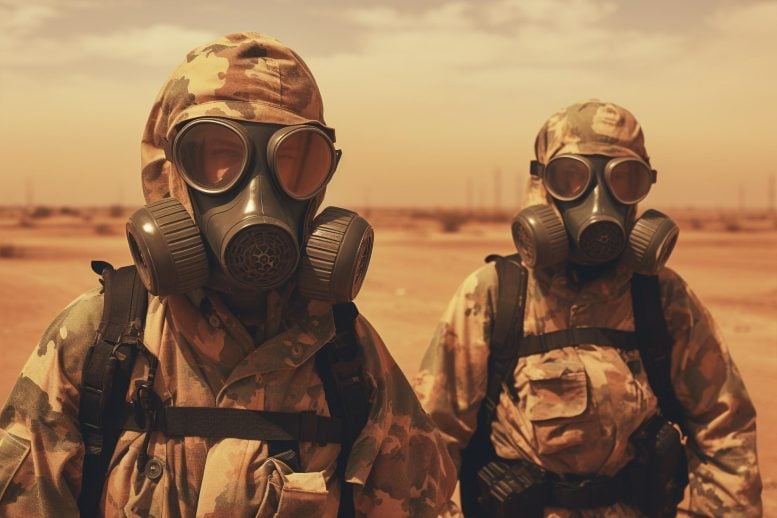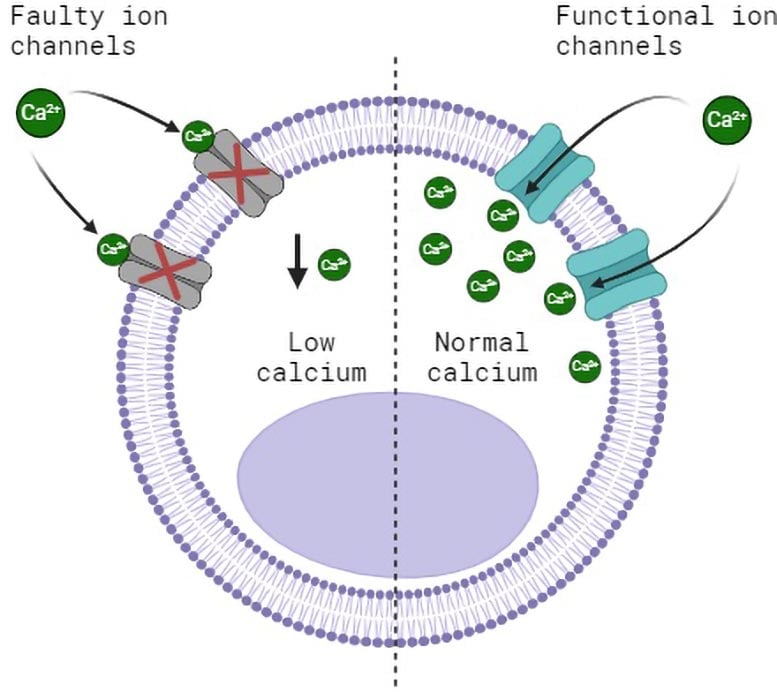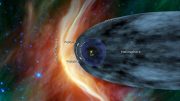
A study by Griffith University has revealed that Gulf War Illness in veterans is linked to defective cell functions caused by exposure to hazardous agents. By identifying issues in calcium transport within cells, this research provides hope for effective treatments and validates the experiences of affected veterans. Credit: SciTechDaily.com
Researchers have identified that veterans suffering from Gulf War Syndrome (GWS) exhibit faulty cell functions due to exposure to hazardous agents during their service.
This landmark study, revealing dysfunction in transient receptor potential ion channels responsible for calcium transport in cells, offers a scientific explanation for the varied symptoms experienced by these veterans. The findings promise new pathways for treatment and a better understanding of this complex condition.
Breakthrough Discovery in Gulf War Illness Research
In a world-first discovery, researchers at Griffith University have discovered faulty cell function in veterans suffering from Gulf War Syndrome (GWS), also known as Gulf War Illness (GWI), is likely caused by intense exposure to hazardous biological and chemical agents during war service.
The landmark research, published in the journal PLOS ONE, solves a mystery that has baffled medical scientists for decades.
Understanding Cell Dysfunction in GWS
Conducted on the Gold Coast by Griffith University’s National Centre for Neuroimmunology and Emerging Diseases (NCNED), the research revealed the cell structures integral for transporting calcium into cells, known as transient receptor potential ion channels, are defective in veterans with GWS.
NCNED Director and author Professor Sonya Marshall-Gradisnik said the role of calcium within cells as a signaling molecule was pivotal, regulating essential functions such as muscle contraction, nerve function, and hormone secretion.
The Impact of Hazardous Agents on Veterans
“The findings from our research provide clear scientific evidence that the health problems experienced by Gulf War veterans can be directly linked to their exposure to specific hazardous agents during their service.
“Our study reveals a crucial dysfunction in cell ion channels, specifically the transient receptor potential ion channels, in veterans with GWS.
“This discovery is a significant step forward in understanding this baffling and complex illness.”
NCNED researcher and author Etianne Sasso said the team’s findings were crucial in demystifying GWS, offering definitive scientific evidence that validates the condition which has long been challenging for sufferers to have recognized and accepted.
“During the Gulf War, defense personnel faced exposure to a wide range of agents, including environmental stressors and biological and chemical agents,” she said.
“Our research clearly shows cell structures within the human body are sensitive and vulnerable to these agents, causing faulty cell function. This breakthrough in understanding the cause of GWI now provides hope for researchers to be able to develop new treatments to improve the future for our veterans.”
Veterans’ Response and Future Implications
Gulf War Veteran and GWS advocate Mr Ian Allwood, said he was immensely thankful to Professor Marshall-Gradisnik and her team for their dedication to our cause.
“To be believed means the world to us,” he said.
“This research is life-changing for the Gulf War Vets. For those in the Veteran community that have been suffering, this is the first step in identifying a causal factor.
“This is groundbreaking research that will hopefully open pathways to treatment for the often-debilitating symptoms.
“Our veterans were prepared to lay their lives on the line, representing Australia, in the name of freedom. We owe them a debt of more than gratitude. They have suffered injury as a direct result of their service.”
GWS affects between 25 percent to 32 percent of the nearly one million veterans from 41 countries who served in the 1990-1991 Gulf War.
More than 1800 Australians served in the Gulf War, mainly in the Navy and with smaller Army and Air Force contributions.
Many were exposed to several mandatory vaccines, prophylactic anti-nerve agent drugs, and various hazardous agents, including insecticides, nerve agents, and depleted uranium.
These veterans suffered from an unexplained cluster of symptoms such as chronic fatigue, pain, inflammation, sleep disturbances, neurological and cognitive impairment, gastrointestinal and respiratory disorders, and post-exertional malaise.
Reference: “Novel characterization of endogenous transient receptor potential melastatin 3 ion channels from Gulf War Illness participants” by Sonya Marshall-Gradisnik, Etianne Martini Sasso, Natalie Eaton-Fitch, Peter Smith, James N. Baraniuk and Katsuhiko Muraki, 25 June 2024, PLOS ONE.
DOI: 10.1371/journal.pone.0305704










Be the first to comment on "Key Discovery Solves Long-Standing Baffling Mystery of Gulf War Syndrome in Veterans"